


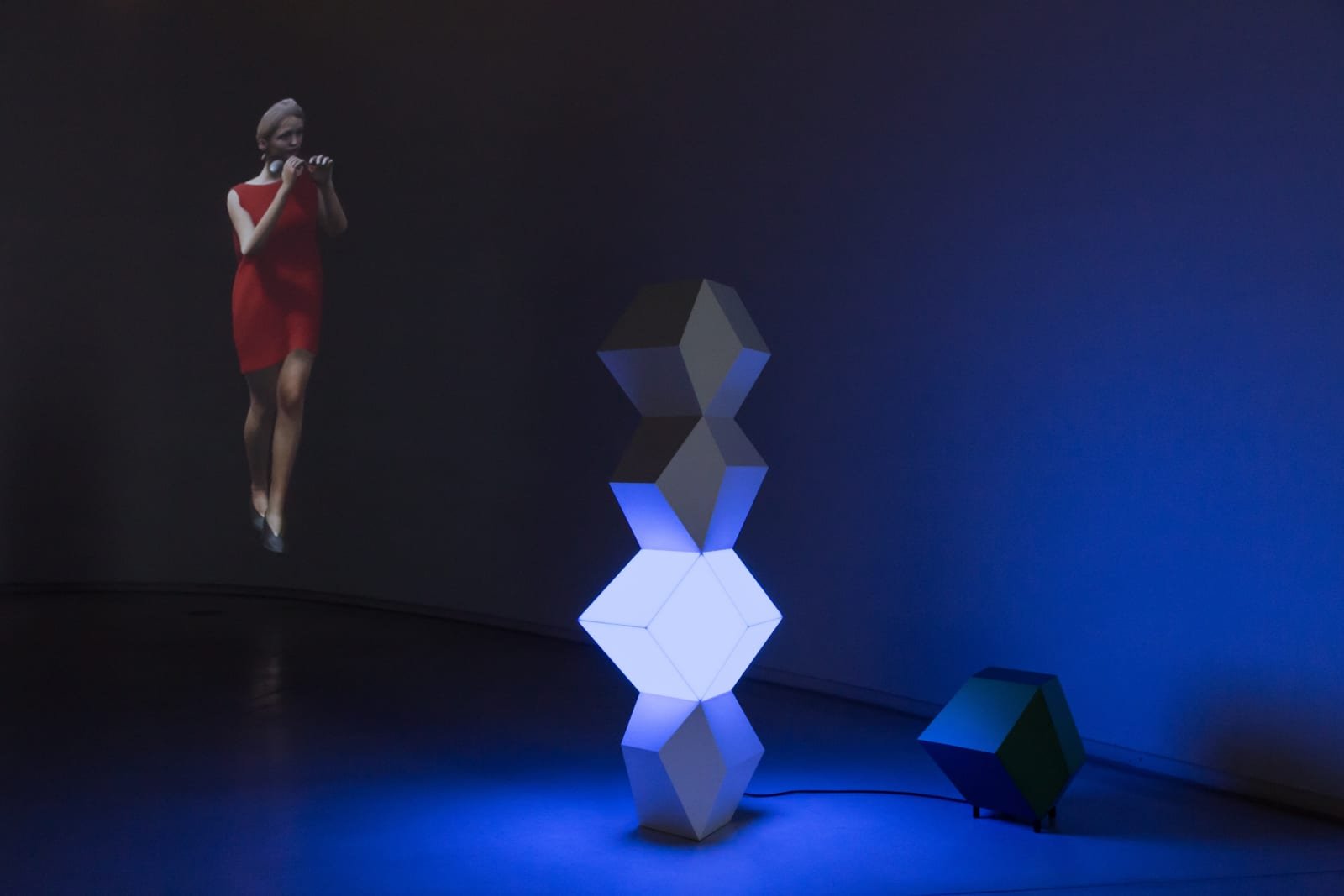


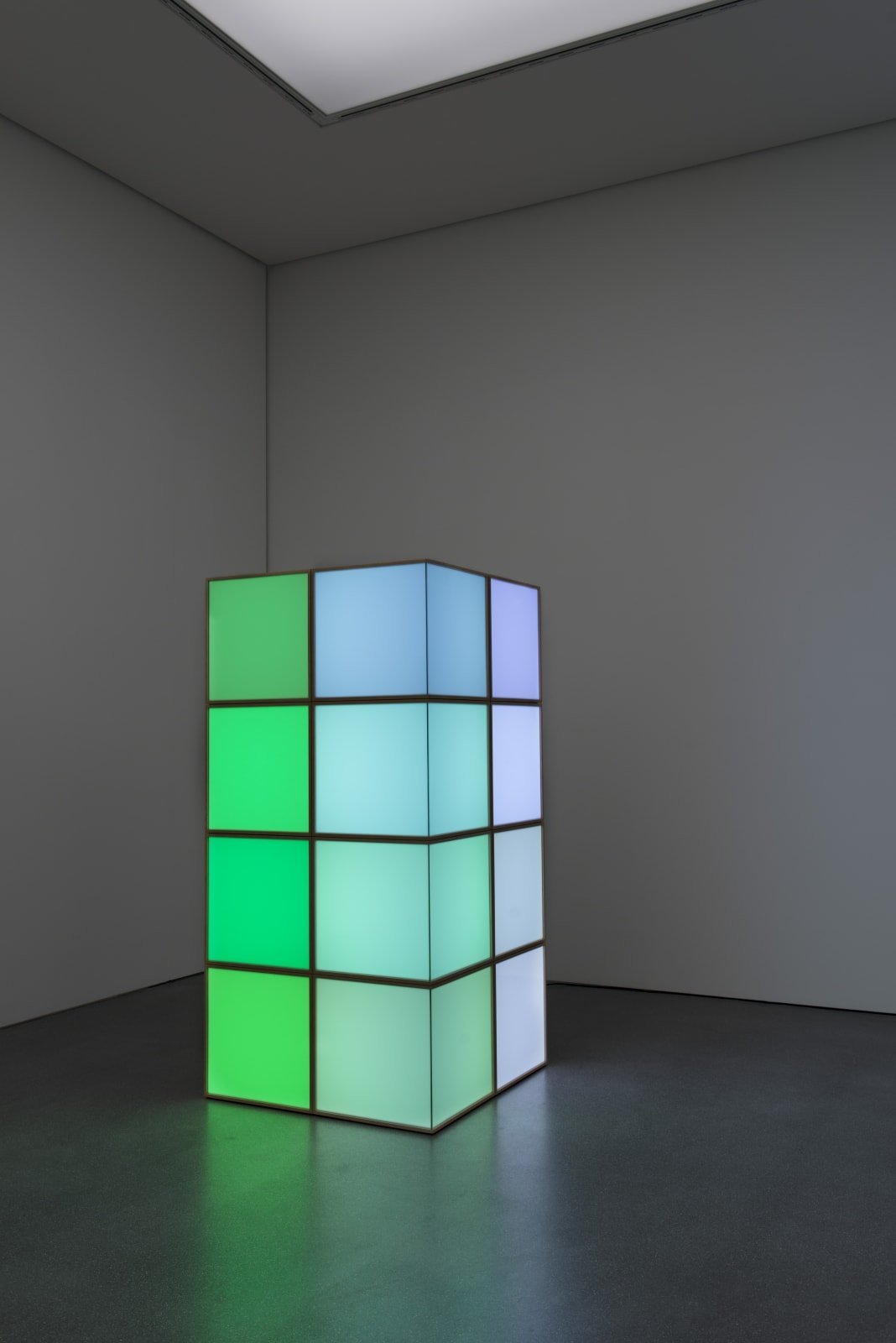

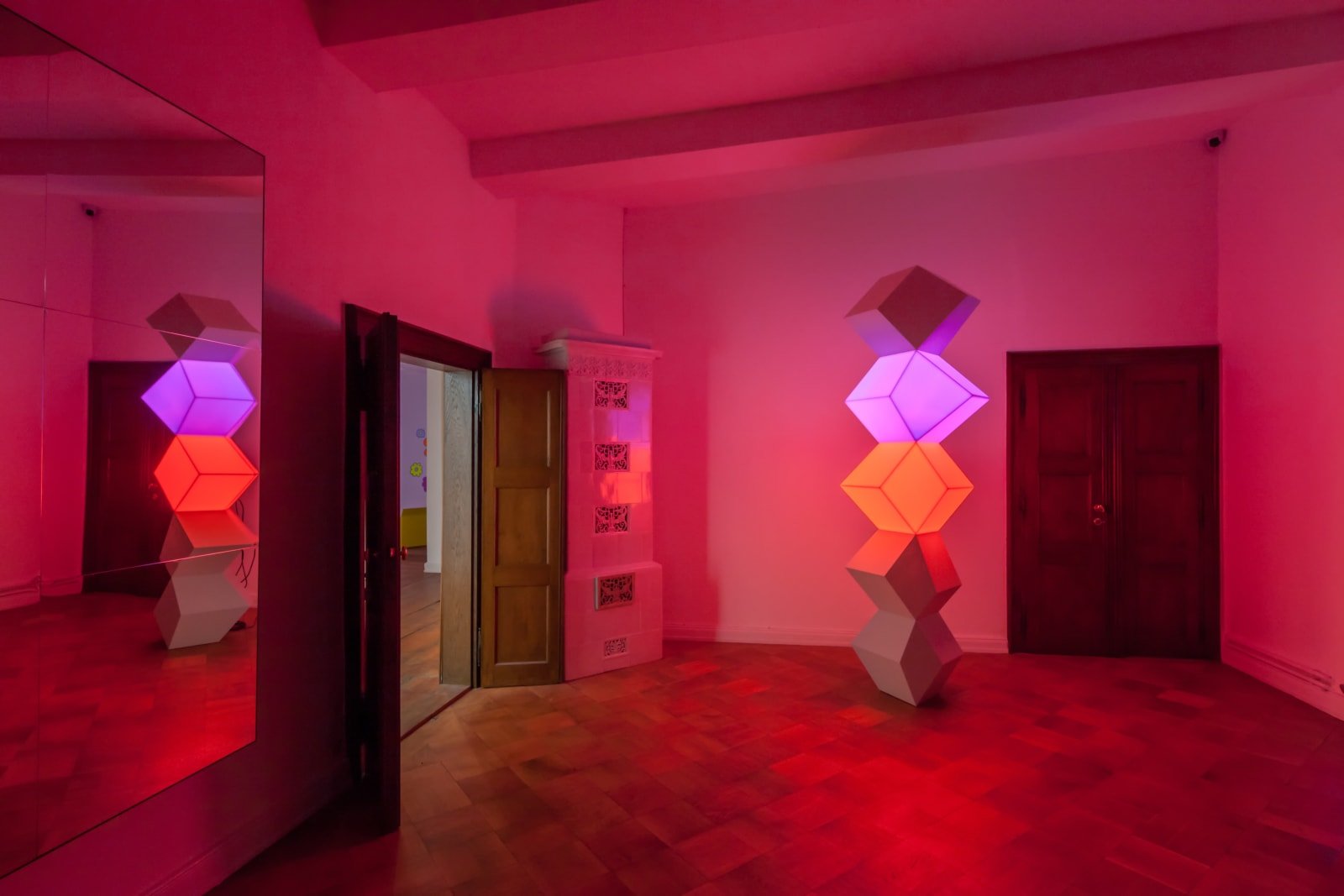


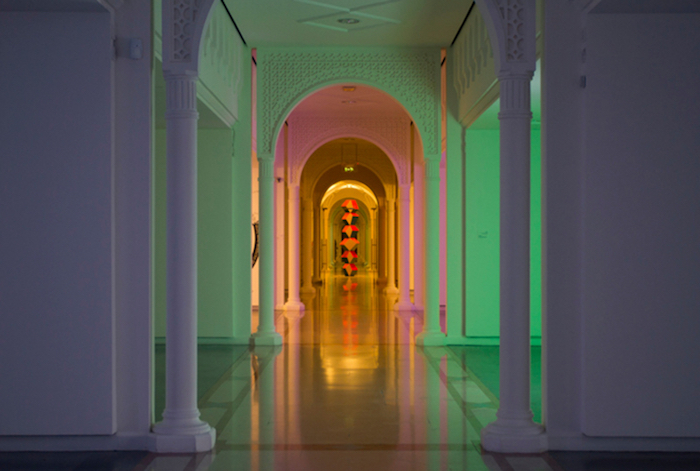



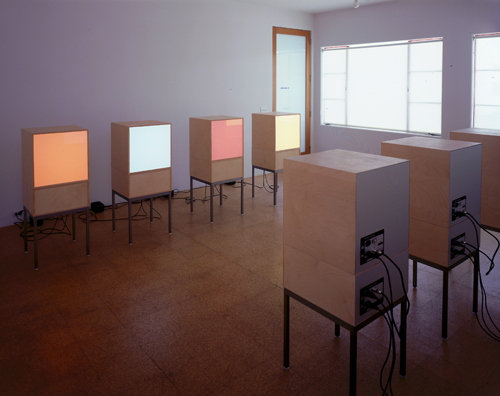
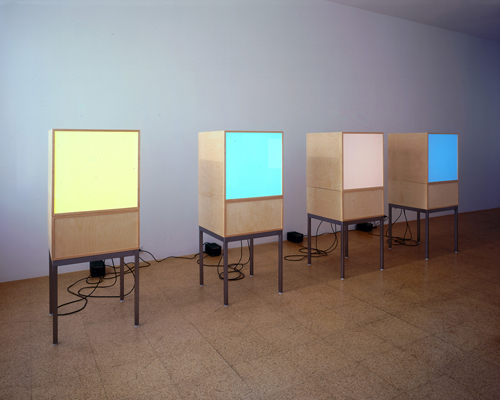

















The work of Angela Bulloch (b. 1966, Ontario, Canada) spans many forms, all of which manifest a fascination with systems, patterns and rules, and the creative territory between mathematics and aesthetics. Since graduating from Goldsmiths College in 1988 as part of the ‘freeze’ generation of young British artists, her work has crystallised into a number of distinct but related strands. The ‘pixel boxes’ have become her most familiar component: initially fabricated in beech wood with a plastic front screen, their softly changing and pulsing colours distil and abstract complex visual patterns into simple shifting monochromes. These works became the signature of a conceptual practice that avoided the shock strategies of many of her contemporaries. More recently, fabricated in copper, aluminium or corian they pay closer homage to their minimalist heritage, while the colours they channel are freed from their earlier origins to become pure abstractions.
Alongside the pixel box sculptures, Bulloch has also returned to the ‘Drawing Machines’ she made early in her career. They operate a simple conceit: a machine draws vertical or horizontal lines on the gallery wall according to some external stimulus – noises made by visitors to the exhibition, or the rhythm of their sitting on and standing from a bench placed facing the work. But this simplicity belies the rich and complex way in which the Drawing Machines bring together modernist concerns of the grid, the monochrome, and the colour field with a playful engagement with interactivity. In a third strand, Bulloch has created electronic simulations of the night sky, which have been exhibited in both large-scale public installations and smaller domestic panels. She selects an area of the sky based upon the primary constellations of the stars it contains and then extrapolates the view point to a location far from the earth, to create a representation of real space, but as her viewers could never see it.
Combines critical essays and visual notes compiled in the process of the Canadian-born, Berlin-based artist's collaboration with composer and musician George van Dam and a TV script written by Christine Lang and Christoph Dreher.
Publisher: Witte de With
ISBN: 978-94-91435-00-3
Angela Bulloch's works often deal with systems of rules and viewer interaction. Drawings make up the core of this publication, including Drawing Machines, a series begun in the 1990s, which involve observers in the production process.
Publisher: Hatje Cantz
ISBN: 978-3-7757-3171-3
Rule Book is an extensive collection of guides, instructions, manuals and rules that have been amassed by Angela Bulloch. They are taken from sources as disparate as: parking restrictions, the Ten Commandments, the standing order of the House of Commons, hankie colour codes, Birkenstock care tips and the detoxification diet.
By displacing these rules from their social and political context Bulloch reveals their 'man-made structure' as well as a society that, in order to maintain a stable social structure, imposes regulations and controls on every conceivable form of activity. As such, the book forms an intriguing snapshot of society at the close of the twentieth century.
Paperback: 128 pages
Publisher: Book Works (October 1, 2000)
ISBN-10: 1870699440
ISBN-13: 978-1870699440